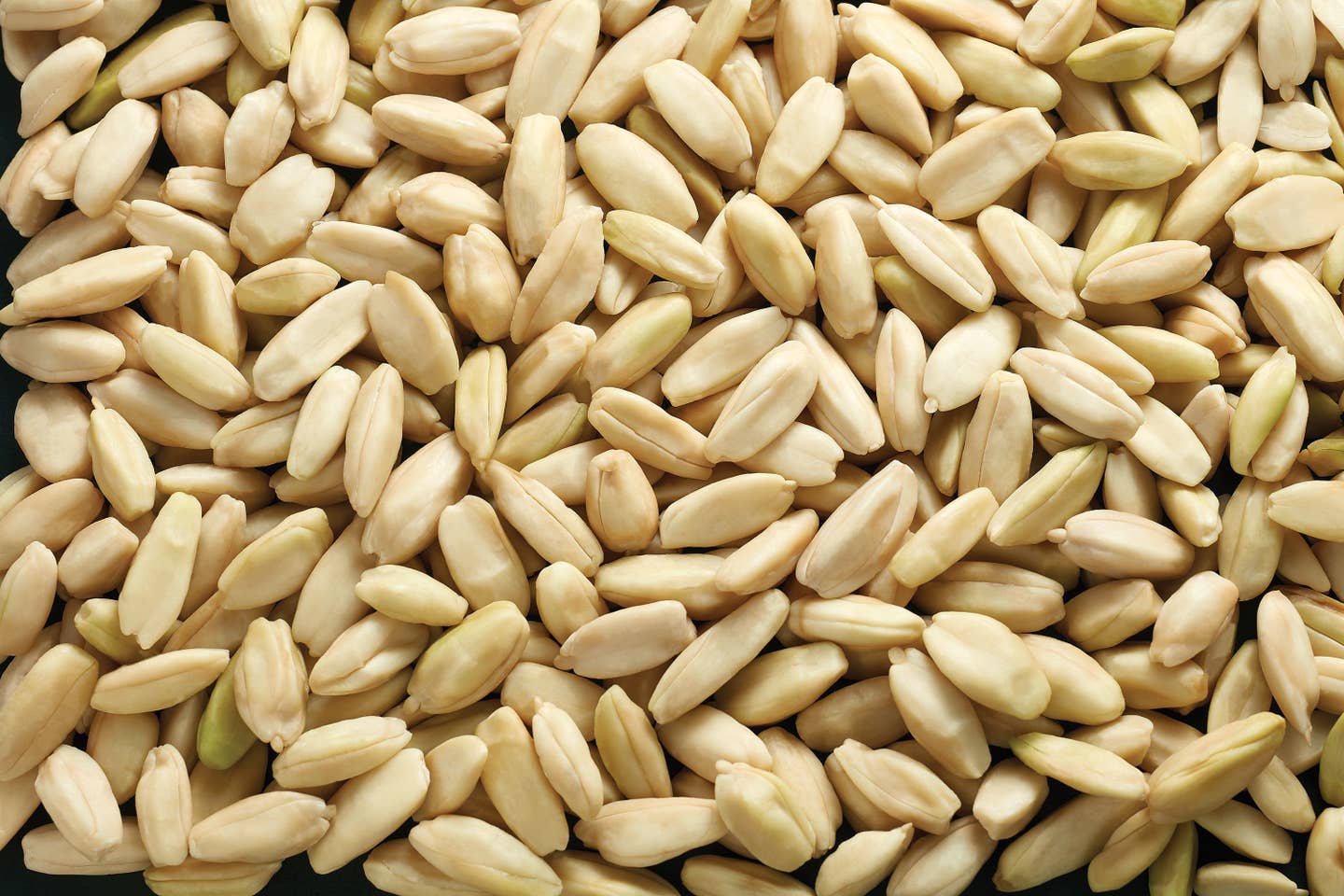
For a Satisfying, Low-Carb Healthy Snack, Try Pili Nuts
When you think of typical snacks, chips and cookies come to mind, which can sabotage your healthiest diet intentions faster than ripping open the bag. But for anyone who wants to snack on a low-carb, healthy whole food snack, high in heart-healthy fat that keep you feeling fuller longer, try pili nuts. These nuts offer energy that is both healthy and diet-friendly, since, with 93 percent fat, pili nuts are higher in healthy fat than any other whole food on the planet, making them a choice for low-carb or keto dieters who want to eat more fat than carbs.
Pili nuts are made up of only 2 percent carbs, and 5 percent protein, with the other 93 percent of monounsaturated fat. "The consumption of diets enriched in monounsaturated fat has been related to a lower rate of coronary heart disease," according to a study, that shows these fats help lower bad cholesterol and as part of a Mediterranean style diet approach, is being suggested to patients with high cholesterol, as a way of helping prevent heart disease. Meanwhile snacking on low-carb high-fat foods will help anyone who avoids simple carbs start to burn fat for fuel, which is the central concept of a keto approach to weight loss.
The fat in pili nuts is oleic acid which is also in avocados and seeds–and a great source of omega 3, omega 6, and other healthy nutrients, As compared to the other nuts you might snack on, pili nuts have the highest amount of healthy fat and the lowest amount of carbs, making them a great alternative to walnuts (which are about 65 percent fat) and almonds ( 72 percent fat), as long as you are not attempting to avoid fat or oils in general.
Fast facts about pili nuts for anyone who asks: What are those?
- Pili nuts have a lower water footprint than almonds
- Pili nuts have 15 grams or more of fat per serving (long-lasting fuel!)
- Pili nuts require a 17 step harvest process to ensure perfection
- Pili nuts are an excellent source of magnesium, calcium, and iron.
- Pili nuts contain 8 essential amino acids
The health benefits of pili nuts
In 2018, the FDA announced that it had reviewed the health claims of oleic acid and approved the claims that it is healthy and has heart benefits." The U.S. Food and Drug Administration (FDA) has determined that there is credible evidence to support a qualified health claim that consuming oleic acids in edible oils, such as olive oil, sunflower oil, or canola oil, may reduce the risk of coronary heart disease," according to the website.
Pili nuts are not only high in heart-healthy fat but also a great source of vitamin E, magnesium, potassium, calcium, and other vital nutrients. Their antioxidants help prevent free-radical damage and reduce oxidative stress in the body.
Harvesting pili nuts are work-intensive but worth it
Pili nuts are hard to come by so when you find them, grab a bag. They are grown on trees in the nutrient-rich volcanic soil of the Philippines and the nuts have to be knocked off the trees and collected from the earth by hand. Then they are sprouted in purified mountain water, and slow-dried to preserve their delicate and buttery flavor. But the trouble is worth it. In a review of pili nuts and their oils, researchers concluded: "Pili pulp and nut oils are potential sources of important minor components such as carotenoids, sterols, and tocopherols, which are being used and have contributed to the emergence of the nutraceutical industry."
If you like macadamia nuts you'll likely love pili nuts, especially those in flavored packs, The Editors of The Beet recommend trying ones from Laird Superfood which makes a Himalayan Salt as well as ones that are Matcha flavored, or try their Cacao pili nuts with Organic Ecuadorian Cacao. Keep them on hand for the next time you need a snack that fuels you up, the healthy way.
Make pili nuts part of your daily ritual to be healthier. For more great ideas on how to practice self-care, take the Laird Superfood Quiz today.
More From The Beet






